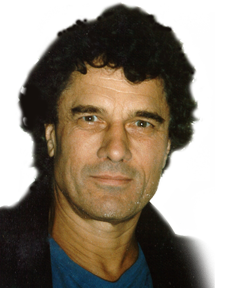Creative Writing
Leo has taught creative writing in Britain and North America, at a great number of universities, and in schools to pupils of all ages from six to eighteen, as well as to many informal groups, not only to young people but to office workers, army veterans, or elderly housewives.
One student from the New York area summed up Leo Aylen’s teaching:
“He helps us let our stories or poems write themselves.”
John Garbarino, from New Jersey, described the teaching as follows:
“Rather than judge a student’s poetry, Dr Aylen works with the verse, discussing technique and offering hints on how to sharpen style. He refuses to judge the emotional integrity of a work because the development of this soundness is something that concerns personality maturation over a long period of time, and he believes that to be a good poet depends on a total attitude to life.”
Leo continues to refrain from judging, but instead offers exercises / games designed to develop rhythmic awareness and clearer visualisation. He encourages writers in all genres to read their work aloud. An important element of his workshops is that he films participants reading their work. While Leo was working in Thailand on a film about the King, David Attenborough was also there on another film, and he and Leo spent a reconnaissance day together, exploring the ruins of an ancient city. Sir David described howhe himself always reads his books and commentaries out loud to his wife before finalising any draft.
As an Award-nominated film-maker for BBC television, Dr Aylen helps the writing offered him by students, whether poetry or prose, to be as vivid as possible. He often suggests treating a poem as a miniature film script (the poem as a movie in the mind), and, since he encourages the study of montage as an important part of the craft of screenwriting, he helps students to realise how montage – the juxtaposition of filmed images – involves a discipline very similar to the discipline of poetry, since it depends above all on rhythm.
Given this viewpoint, a master-class on story writing may well turn into a discussion of how the student could shape his/her story into a film script, while a discussion of screenwriting might relate non-linear story-telling to the writing of poetry. Since most documentaries have a non-linear structure, and many fiction films now have documentary elements, this approach helps the practitioner of one kind of writing craft learn from the practitioners of other kinds.
From 1997 – 2002, Leo taught courses on the performance of poetry to professional actors at the London Actors; Centre, helping them to extend the pitch range of their voice and use pitch as an aid to interpretation, to develop character appropriate to the poem in question, since the prime craft of an actor is that of finding a character, and, not least, helping them find the humour which waits beneath the surface of so much poetry, and which is so often submerged beneath over-solemn interpreters. Much of what he developed there he has converted into exercises to be used in his creative writing classes.
To give some examples: one of his exercises induces a dream state: lying on the floor of a darkened room, listening to music composed by a painter; almost everyone sees vivid pictures in the mind produced by the music. By accepting the challenge to describe the pictures, one finds oneself writing a story or a movie scenario. This exercise is often followed by one in which participants choose, as it were, a groove within which to work (Height/ Depth or Heat/Cold or Love/Hate, etc). Backed up by rhythmic music on drums, the participants speak, within their chosen groove, keeping to the rhythm of the drums; this creates a sequence of words which will provide them the sketch of a poem or the skeleton of a story.
In another exercise-game, the participants compose a sonnet, each person creating a line which follows from the line before; the aim is to create a coherent story (even a mini film-script) which may be nonsense, and often is, but must come alive with memorable images.
Another involves being given half a dozen random objects, sometimes rubbish, and using them to create a story. In this, as in other exercises, Leo uses his experience as a film-maker and screenwriter to help participants visualise the story they are writing, in order to make their readers’ experience more vivid.
